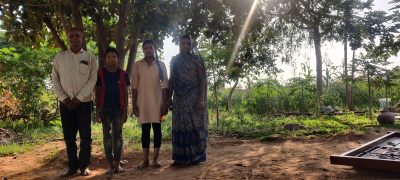
A number of factors have combined together to emphasize the need for a careful re-look at not just the policies relating to tribal communities and regions but indeed even at the objectives that are sought to be achieved.
Some of these factors have in fact earlier also been emphasized by several senior government officials with valuable first-hand experience of these issues. They noticed that the existing policies did not work out well in several tribal regions and even after the implementation of what were seen as ambitious development projects sometimes the difficulties faced and discontent voiced or experienced by people had increased. This led to a clearly felt need for changes by not just the people but also by several senior officials and academics.
Thus while partly the need for change arises from a desire or motivation to correct past mistakes and distortions in policy, in addition the urge for change also comes from the increasing realization that tribal communities have inherent strengths to take forward new tasks of environment protection and regeneration, including climate change mitigation and adaptation. This can be done in ways which strengthen and improve the prospects of sustainable livelihoods.
This aspect of integration of local livelihoods and environment protection is very important, as at some places climate agenda has been taken forward in a highly distorted way which displaces a large number of people. Recently the Oakland Institute, USA, has published several reports from African countries in which a distorted climate agenda supported by huge funds led to disruption and displacement.
So we must carefully find ways and means of carrying forward the tasks of climate mitigation and adaptation in ways which strengthen local sustainable livelihoods without causing displacements and disruptions. Tribal communities generally have strong traditional strengths for taking forward protection of forests and planting and nurturing indigenous species of trees much along the lines of a natural forest, as well as for soil and water conservation and for natural mixed farming systems which avoid fossil fuel based inputs.
All this can be very well achieved in systems of gram swaraj, a concept respected in India and associated with the thinking of Mahatma Gandhi, which means growing self-reliance of village communities in meeting their needs, and all-round strengthening of community life based on this. These ideas, although relevant for most villages, sit particularly well with the thinking of many tribal communities which emphasize self-reliance that can also help to avoid undue outside influences of a kind that are hurtful for valued traditions and sensitivities of tribal communities.
So what government policy should emphasize is that sustainable livelihoods integrated with various aspects of environment protection (including well-thought out aspects of climate mitigation and adaption) will be promoted in highly creative and participative ways. This should be achieved within conditions of increasing gram swaraj and self-reliance.
When it comes to conservation and wild-life protection projects, these are often taken up at present in ways which cause disruptions and difficulties for people. Hence future policy should be to integrate wild-life protection and conservation work with the sustainable livelihoods of local tribal people who with their rich knowledge of local conditions are the most suitable persons for taking forward this work in ways that are well integrated with the welfare of tribal communities. In fact many leading conservationists have also been advocating this approach as it is realized that without the participation of local people, it becomes difficult to protect wild life from poachers to achieve several other conservation objectives. Similarly as we need new water conservation works in forests which can help to quench the thirst of wild animals, at a time when several water sources in forests are drying up, this is best taken forward with the better understanding of villagers of local conditions.
However a more troubling question can be asked regarding the utilization of the mineral wealth or other resources often found in tribal regions whose large-scale exploitation in the past has led to huge displacement and disruption in some areas, leading to increasing discontent.
Here we must point out firmly that other ways of utilizing minerals, forest or other resources can be found which are not disruptive for local people. The problem often is not with utilization per se, but rather with highly exploitative approach aimed at plundering resources as early as possible or maximizing earnings within a short time. There can be different approaches evolved in consultation with local people which can result in slow, gradual utilization of resources on a smaller scale over a longer period of time, using methods which are not destructive towards environment and can also provide local livelihoods. In the Dalli Rajhara iron-ore mines in Chattisgarh once there was discontent over excessive mechanization and then with the support and suggestion of workers the management of Bhilai Steel Plant could reach an agreement for an intermediate technology which introduced some mechanization but also protected many livelihoods. With this kind of concerns and participative decision making, the worst exploitative practices can easily be avoided.
*
Click the share button below to email/forward this article. Follow us on Instagram and X and subscribe to our Telegram Channel. Feel free to repost Global Research articles with proper attribution.
Bharat Dogra is Honorary Convener, Campaign to Save Earth Now. His recent books include Saving Earth for Children, Planet in Peril and A Day in 2071. He is a regular contributor to Asia-Pacific Research.
Featured image is from the author
Global Research is a reader-funded media. We do not accept any funding from corporations or governments. Help us stay afloat. Click the image below to make a one-time or recurring donation.

Comment on Global Research Articles on our Facebook page
Become a Member of Global Research
Source link

